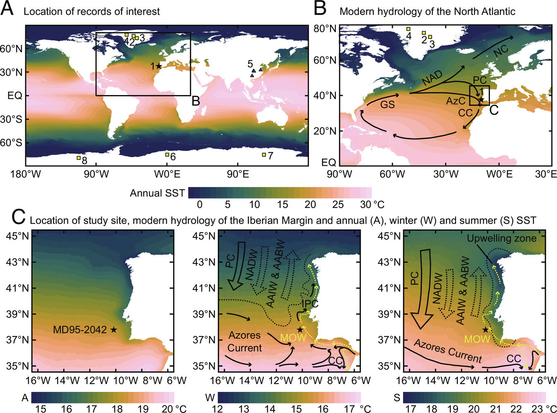New first-authored #scientific #publication in @PNASNews with Edouard Bard (Collège de France and CEREGE)!
We revisit the #thermal bipolar seesaw using #PaleoTemperature records from the Iberian Margin!
#Science #Paper
#PaleoClimate #PaleoClimates
#ClimateChange #ClimateChanges #AbruptClimateChange
#SeaSurfaceTemperature #SST
#ClimateProxies #GDGTs #RIOH #Alkenones #UK37
#NorthAtlantic #AtlanticOcean #Atlantic #Ocean
#AtlanticMeridionalOverturningCirculation #AMOC
https://doi.org/10.1073/pnas.2209558120 (1/20)
We revisit the #thermal bipolar seesaw using #PaleoTemperature records from the Iberian Margin!
#Science #Paper
#PaleoClimate #PaleoClimates
#ClimateChange #ClimateChanges #AbruptClimateChange
#SeaSurfaceTemperature #SST
#ClimateProxies #GDGTs #RIOH #Alkenones #UK37
#NorthAtlantic #AtlanticOcean #Atlantic #Ocean
#AtlanticMeridionalOverturningCirculation #AMOC
https://doi.org/10.1073/pnas.2209558120 (1/20)
